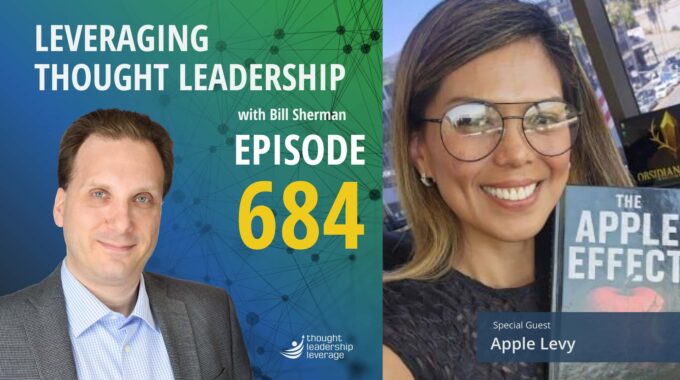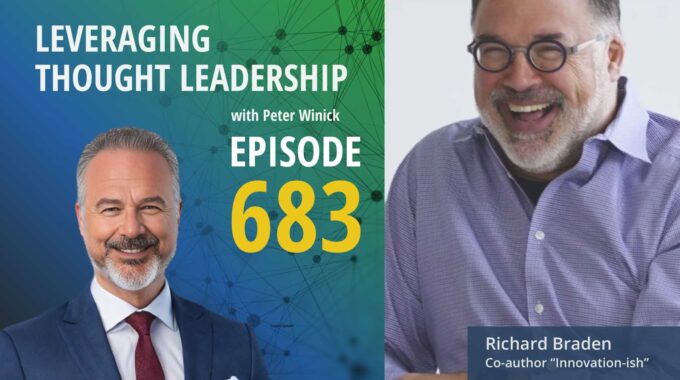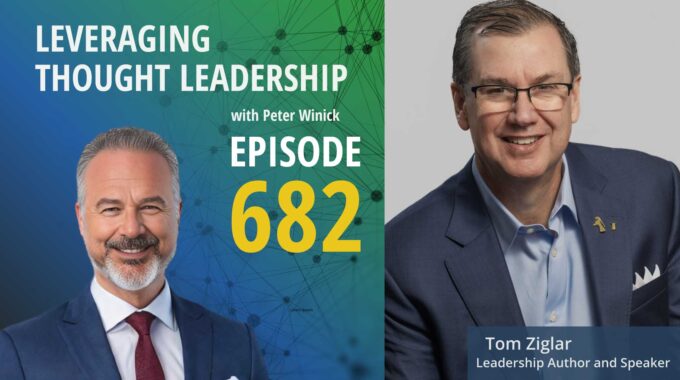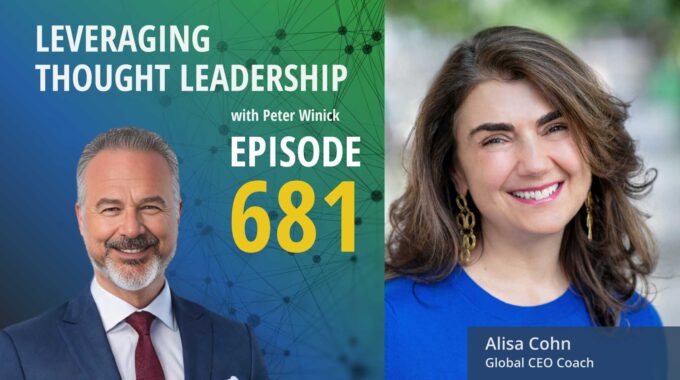A field-tested framework for leaders who want better margins, cleaner operations, and a stronger culture…
Strategies for Thriving in Leadership and Consulting | Sohee Jun
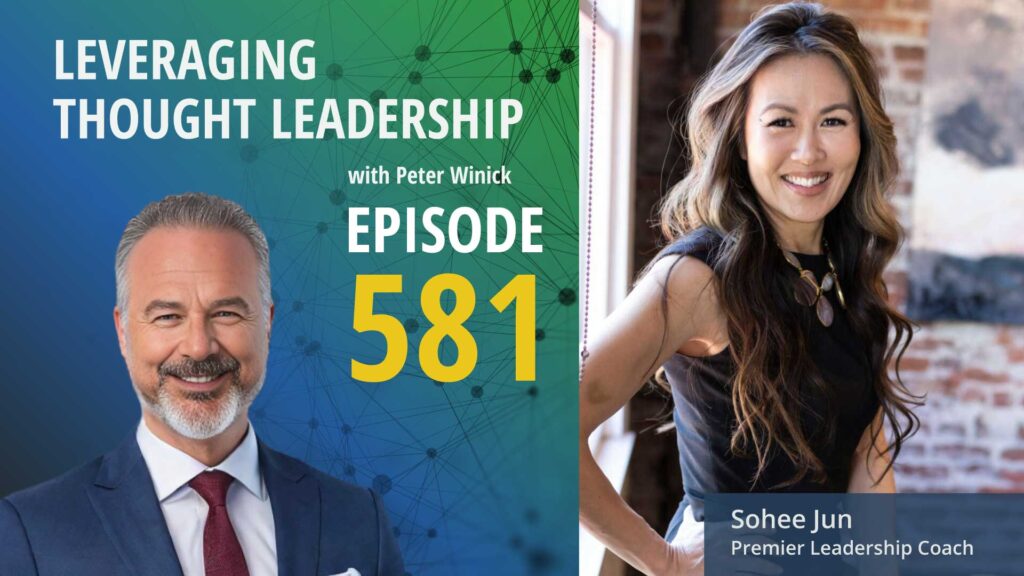
From Corporate Roles to Independent Consulting: Navigating Challenges and Achieving Impact
A conversation with Sohee Jun about her journey from corporate roles to independent consulting.
In this episode of the Thought Leadership Leverage podcast, host Peter Winick welcomes Sohee Jun, a premier leadership coach, mindset expert, corporate leadership facilitator, speaker, and best-selling author of “Mommytracked: How to Take Authentic Risks and Find Success On Your Terms” and her latest release, “The Aligned Mindset: Secrets of High-Achieving Women for Navigating Work and Life.” Sohee shares insights from her journey, highlighting the importance of following one’s energy to make a significant impact. Moving from a six-year-old immigrant integrating into a new culture to a leader in organizational psychology, she has always prioritized connection and people. Her extensive career includes working with leaders on strategy, culture, and employee engagement.
After 15 years in corporate roles, Sohee ventured into independent consulting. The transition was challenging, requiring her to juggle multiple roles and iterate constantly. She emphasizes the need to discover one’s strengths and delegate other tasks to maintain focus and impact. Initially, she said yes to everything, leading to burnout. Over time, she learned to prioritize quality over quantity, becoming intentional with her time and efforts.
Sohee also discusses the importance of expanding beyond one’s initial network and maintaining consistent marketing efforts. She stresses the need to be courageous in saying no to misaligned opportunities to prevent falling into a cycle of overwork and dissatisfaction. On pricing, Sohee advocates for openness and transparency, leveraging her insider knowledge to stay competitive and fair in the market.
Three Key Takeaways:
Follow Your Energy for Impact: Sohee emphasizes the importance of following where you have the most energy and impact. This approach has guided her journey from a young immigrant to a successful leader in organizational psychology, and later, to an independent consultant.
Quality Over Quantity: Initially overwhelmed by saying yes to everything, Sohee learned to prioritize quality. She now focuses on intentional time management and selecting projects that align with her values and strengths, highlighting the importance of saying no to maintain balance and prevent burnout.
Consistent Marketing and Networking: Sohee underscores the necessity of reaching beyond one’s initial network and maintaining consistent marketing efforts. She advises that expanding your reach and staying engaged with your audience is crucial for sustainable business growth.
If you’re a new consultant or thinking about breaking out on your own, take a few minutes to watch this video from Peter Winick on How to Use Thought Leadership to Grow Your Business.
Transcript
Peter Winick And welcome, welcome, welcome. This is Peter Winick. I’m the founder and CEO at Thought Leadership Leverage. And you’re joining us on the podcast today, which is leveraging thought leadership. Today, my guest Sohee Jun. She is a premier leadership coach, a speaker and a bestselling author. She’s a mindset expert and a corporate leadership facilitator. So she clearly fits the profile of the folks that we tend to talk to on this podcast. And I’m excited to have a good conversation with her today. So welcome aboard today. How are you?
Sohee Jun Thank you Peter, I’m doing really well. Thanks.
Peter Winick Great. So let me ask you one of my favorite questions around this, which is which is how did this happen? How did you get here? Because I have yet to meet anyone that said, well, since I was seven, I dreamed of being a author coach facility. Like, it’s usually nonlinear, so I may be the exception, but how did how did one get how did you get here?
Sohee Jun Yeah, I love this question. And it really reinforces for me, when I look back the, following the breadcrumbs. And I’m a firm believer that when you follow where there’s energy and where you feel and flow and where you feel you have the most impact, that’s the intersection. I’m doing really great stuff in the world. So to answer your question more directly, Peter, it’s you know, I was innately and have been fascinated by people and doing the hard work of integrating into a new culture. At the age of six, I wanted to fit in and I wanted to belong, and that propelled me into a lifelong love of connection and people. So fast forward to high college, when I make that really hard decision of like, what do I want to do for the rest of our life.
Peter Winick With which everyone should make that decision at 18.
Sohee Jun College, right?
Peter Winick Right, right.
Sohee Jun So as I was grappling with the same question, you know, I just had to get real and say, like, mom, dad, a life of medicine is one that I know you would be traditionally proud of. However, that’s not one that I can really give my energy and love to. And I made the decision to go into industrial organizational psychology, otherwise known as organizational psychology. Yeah. So that led me into a career, a really broad career, doing very interesting, you know, impactful things for organizations working with leaders in teams, strategy, culture, employee engagement, talent, all the stuff that’s top management.
Peter Winick But with that as an internal resource, as an employee of.
Sohee Jun Yeah.
Peter Winick Yeah, that’s the talk about. So. I think most people understand sort of that function and the role and all those other things. When you’re an employee, you don’t have to worry about, you know, sending invoices, getting clients where the next paycheck is coming from, it’s action. So now you take those skills and apply it to a bigger universe. Right. Yeah. Does. How did that transition go for you?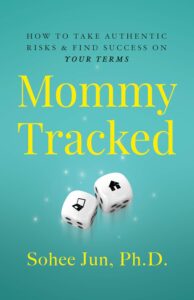
Sohee Jun It was very clunky. Oh, well.
Peter Winick Let me see.
Sohee Jun Yeah. So, you know, in that you’re right, I in my 15 years internal working with a lot of different companies, you can see on my, you know, website, I’d been most industries high tech engineering, all of the things. And what I learned then was like, wow, okay, how do I prioritize? And one gives me energy, which is coaching. And how do I impact the world in that way. So, you know, on this side now of being in my own consultancy for seven years, it really was a clunky start. To answer your question. It was like, okay, oh my gosh, I’m doing all the work. And then, you know, the first year or so I was doing more work than I’ve ever done because you’re wearing different hats. So isn’t just, hey, I lead a team now. It’s now I am the CEO of my business. I may have contractors with me. How do I do marketing? Do I need to do marketing? How do I scale? Do I need to scale? Who do I bring in to support me? Right? In the first few years, it’s all about making a lot of a lot of pivots, a lot of pivots, a lot of iterating is what I call it. And if somebody doesn’t embrace that on this journey, it’s really you’ll make it hard for yourself.
Peter Winick But I think part of part of that process is to. Be self-aware enough to say, oh, and here’s the pieces of this that I either hate, I am not good at or near, I stink at, or I don’t enjoy and or whatever the case is. And you don’t get a hall pass, right? It doesn’t mean, hey, if I’m not so good at accounts receivable or making those calls or whatever to collect on invoices or, you know, pricing is not my jam. You don’t get a hall pass, right? Yeah, yeah. The question is either you’ve got to develop those skills and or partner with folks that already have them so that you can do the things that add the most value.
Sohee Jun Yeah. And I love that lens because it is looking at it from okay, where can I make the biggest impact and rally and bring value. And for me, you know, I like to say it’s a yes and yes. You have to be self-aware. And I learned more self-awareness of the process. So by that I mean some of this stuff came organically in terms of the right and my love of writing. I’m like, oh my gosh, I didn’t realize how much I really love the process of writing, which is why I birth, you know, books and yes, all of that. And then the speaking part came, probably 3 or 4 years into my business where I’m like, yes, I did it in my corporate internal life, and then doing it in this way, you know, and different ways that I do it now. It’s just, learning how much you do love that and bringing value in that way. Which means then, okay, if I’m putting those things on my, you know, to do that, I’m not going to be in the business of managing my calendar or writing the newsletter or doing these social things, which you have to offset with people that can support you in the right way.
Peter Winick Right. So what are the. 2 or 3 things that you’re doing very differently now. From a business operations standpoint, or the way you package your services or whatever the case may be from when you started seven years ago.
Sohee Jun Yeah. So the biggest thing that is true now is quality. So what that look like early on in my business is. Yes, I’ll take that call. Yes, I’ll do this. Yes, I’ll do. So doing all everything from marketing to the actual work to the actual coaching to the building on my website. Right. It was, I’m going to do it all to now I’m really anchored into the quality of what I provide, which means I say no a lot. So it’s kind of a it’s a flip. It’s been a really interesting evolution to see where I said yes to most things. And now I’m being very intentional. And I think that’s the other piece intentional with my time. So I have an assistant that can tackle and block my calendar in the right way and support me.
Peter Winick Just be there on the saying no piece, because I think that early on when we first venture out, it’s almost the default switch is to say yes to everything, whether that’s internal. I’ll write the newsletter, I’ll do the this I’ll do that and or external where, hey, is that a project I can do? Yeah, I guess I could write. Is that a project that I have the skills to do? Yeah. Is that the reason I struck out on my own? Probably not. Right. So I think it’s, it’s that yes to internally and externally and having the maturity to say, you know, yeah I could do that. I could do compensation or whatever else the client might ask you, but that’s not what I really want to get paid to do. That’s not what I want to be doing. And that takes a lot of courage sometimes, because sometimes the PNL that month might say, yeah, yeah, take it, take it. We need the revenue. But that’s a bad cycle to start, isn’t it?
Sohee Jun Oh, Peter, I mean, that is you’re honing in on something that I think really makes or breaks up for people having their own consultancy or, you know, small consultancy. I think to your point, like this has been two rounds of my entrepreneurship life. So early on it was that yes, yes, yes. And so what that look like for me is I was taking on all the change management projects because it was available. People didn’t quite know how to leverage me because I wasn’t marketing myself in the specific way. And they’re like, we’re just that there are projects that you and I said, okay. And literally, Peter, I was working 60, 70 hours a week, way more getting revenue, certainly getting paid. And yeah, entirely miserable. I was completely like, this is not what I came out to do. Right? So that was lesson one. And on this side of it, you know, understanding what I want to do and anchoring to saying no and yes to the right things, it’s a practice and a muscle to build on. It’s really difficult and it is courageous.
Peter Winick And if you’re enjoying this episode of Leveraging Thought Leadership, please make sure to subscribe. If you’d like to help spread the word about our podcast, please leave a five-star review at ratethispodcast.com/ltl and share it with your friends. We’re available on Apple Podcasts and on all major listening apps as well as at thoughtleadershipleverage.com/podcast.
Peter Winick And why that I think an extension of that I’d love to get your take on this is sometimes early on that first six months, a year, 18 months, whatever seems really, really easy. Right. And what I mean easy is you put out to your network, hey, I’m doing my own thing now, and there’s all that low hanging fruit. Now, some of it you might not have chosen to pick and wouldn’t do today. So it’s like I asked and then I’ve got a full book of business. Then that sort of, it doesn’t totally go away, but you have a viable, sustainable, ongoing business. You have to have a consistent flow of clients of the right type coming in, which therefore means you need to have some sort of a marketing function, because a lot of I think consultants, coaches, etc. dive in and like I’ll deal with the marketing later. I have a website that’ll cover my brand, but marketing meaning marketing for the purpose of. Net new client acquisition. So can you touch on that for a moment?
Sohee Jun Yeah, I think I was in that early on. Meaning? Yes. Everyone wants they’re still helpful. People want to help you when you’re out on, you know, so and so. It’s a very, it is that easy kind of low hanging fruit stuff that you take on. And then for me, the journey has been okay. I want to consistently grow in the right way, which means at some point I’ve got to go beyond my network, who I love and still, you know, maintain relations with. And it’s important part of my business to keep them, keep connected to, to them. And then the question to your point is, how do you grow in a way that is aligned to your business and values in the ways that you want to grow? And for me, that’s been a non-negotiable in the sense of like, I’m not going to do it when I’m not busy or being haphazard with it. Right. And I think a lot of coaches, consultants and the people in our. World get in the mindset of like, oh, I’ll get to that when you know, I have a minute, meaning I’ll get to the newsletter, or I’ll do this thing.
Peter Winick I write.
Sohee Jun That really should be a consistent app. And so it’s that goes back to what you asked about earlier in terms of what do I like to do? What do I not like, do I don’t want to be in that business. So I brought in somebody on my team to help me do the marketing and the newsletters consistently, that I can take it off my plate and still grow organically.
Peter Winick And how do you deal with the issue? Well, there’s two issues I’ll throw out there pricing, but not just pricing in terms of, hey, here’s, here’s engagement, here’s what it’s going to cost. But I think that it’s a really awkward place to be as both the CEO, the negotiator, the salesperson, and the product delivery person. Right. Like how do you how do you thread that needle? There’s obviously I don’t know. I’ll tell you what I’m asking, because oftentimes what I find is the only person that wins in the case for that. So is the client because you to lower your prize or give away more stuff or get more flexible on something, right? Because you don’t want to be sort of the tough one, but you have a fiduciary responsibility to yourself to do things in a, in a way that are financially and fiscally responsible.
Sohee Jun I agree, I think the. Why it’s worked for me is that I’m. I’m always keeping upbeat on what’s the kind of the economic trends out there. Right. So you meet with people and you get a sense of what are people charging. And I’m a firm believer of being transparent, open about these things.
Peter Winick Yes.
Sohee Jun So really keeping a pulse on both economically, what are people paying for? And you know, how much is being charged. And oh, by the way, Peter being on the inside and sourcing coaches and having been so that I’m dealt with, I really understand what how they package things and what they charged for it. So that gives me a leg up in terms of look, I led internally the organization development change management team. So that means I have an understanding of what are people charging. And so that is information for me when I go to negotiate or I’m sitting down with the client and saying, okay, I’m in my head, I’ve done the work already up front and have identifying what’s fair, what am I going to provide? How many hours are mine really going to put into this? What is this worth? What’s the market pain? I do all of that research and quite honestly, Peter, on this journey I’ve found that I really love and enjoyed the negotiation aspect of this work, which I thought I would hate. And that’s interesting.
Peter Winick And. Yeah.
Sohee Jun Yeah.
Peter Winick And. In terms of the sweet spot. Now, what’s interesting, I find, is the longer someone has been doing their thing, the smaller if you will, their sweet spot gets because now they can identify. I am world class at solving these types of problems for these folks. Yeah. Is that does that ring true?
Sohee Jun Yeah. And absolutely it does. And also by, you know, where you feel you add the most value. So I started out broadly coaching at the what I would call mid-level and really understanding that space. And in time I’ve found like I coach from lived experience. So my niche is working with female leaders. Yep. And then going even further into okay, well I work a lot with Asian female leaders and like finding more and more sweet spots. So I think that’s definitely been true for me. And then it doesn’t have to be for everyone. But yes. And I’m wondering, Peter, is that true for you?
Peter Winick Well, yes and no. So it’s true that I love the question. So yes, from the standpoint of we are laser focused around the types of folks that we work with, authors and leaders, academics, etc., and the type of work we do. But that being said, underneath that, that we’re not industry specific, etc., but we’re laser focused on the type of people we work with and what we do. And I think it’s really easy for us these days, the last, you know, ten plus years to say, no, that’s not something that we do and what we’ve done to sort of solve that for our clients, because we still want to, you know, make sure they’re getting the best of everything is there’s the core stuff that we do. There’s some things that we do really, really well. Then there’s some other things that we know our clients need, want, might have used for. And we’ve just, you know, sort of vetted a bunch of folks that we felt comfortable saying, hey, we’re not a ghostwriting agency, but if you need that, you know, here’s two people to talk to, and we can vouch for them because we worked with them for a zillion years or a publicist or whatever, versus ten, 15 years ago. We might have tried to dabble in some of those things. And it’s like, I want our clients to work with people that are top of the game in the subset of things that they do. And what I found is that actually creates a really cool cross referral ecosystem. So I think it’s kind of weird in that the less you choose to do in terms of what is your core, the easier it is to partner with others where you’re not competing and you know, you’re all of a client service mindset and saying, hey, I’m really I’m best in class at this. You’re best in class at that. We share the same clients, but we’re not sharing the same budget from that client. Which makes sense, really. Yeah.
Sohee Jun I mean, I think too, that that is about like, how do we give to each other? And to me it’s about there’s always going to be work where what’s the lane that you’re in and how do you help others? It’s all a part of that ecosystem.
Peter Winick Yeah, I think that’s exactly right. Well, this has been awesome. Appreciate your time. Thanks for coming on and sharing, sharing your story and your journey today. Sohee, I love it.
Sohee Jun Thank you for having me.
Peter Winick To learn more about Thought Leadership Leverage, please visit our website at ThoughtLeadershipLeverage.com. To reach me directly, feel free to email me at Peter at ThoughtLeadershipLeverage.com, and please subscribe to Leveraging Thought Leadership on iTunes or your favorite podcast app to get your weekly episode automatically.


